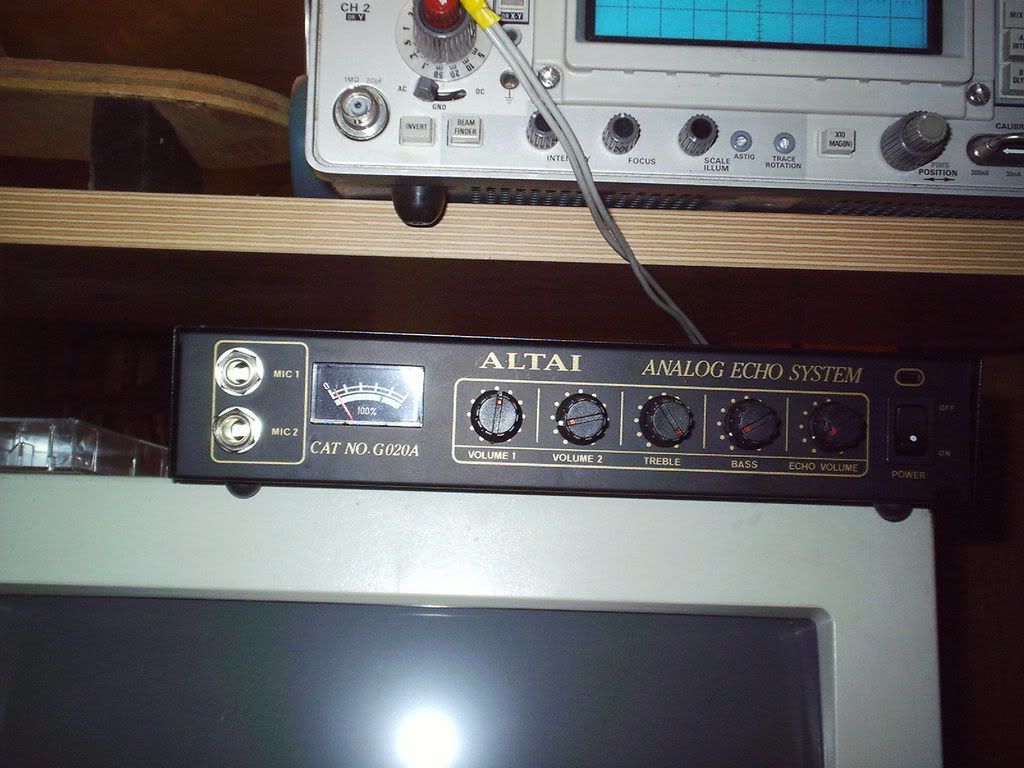Changing the delay time on a BBD
Moderator: interruptor
-
Dub Attack Force
- Posts: 31
- Joined: Sat Nov 24, 2007 2:12 pm
Changing the delay time on a BBD
Should be possible to do it just by replacing the clock/crystal don't you think?
- interruptor
- Posts: 1211
- Joined: Sun Sep 04, 2005 11:46 pm
- Location: Switzerland
- Contact:
Not a specialist too, but doesn't exist 'parametric' clock ?
Making you able to change delay time 'on demand'...
I remember having build little blinking led using a clock with a pot on it on electronic lesson...
Making you able to change delay time 'on demand'...
I remember having build little blinking led using a clock with a pot on it on electronic lesson...
KoCha, reggae-dub producer
Almighty Dub Records - Independent Reggae Dub Production
Open Dub Foundation - The WorldWide Dub Meeting
Almighty Dub Records - Independent Reggae Dub Production
Open Dub Foundation - The WorldWide Dub Meeting
-
Dub Attack Force
- Posts: 31
- Joined: Sat Nov 24, 2007 2:12 pm
Thanks guys. The variable clock idea based on a Hex Schmitt trigger or a 555 timer oscillator is an excellent idea. Although surely, we must be overlooking something and it can't be that simple or else someone would have done it already.. or would they? For the sake of reggae science someone should try it out.. I might give it a shot but I don't have the time at the moment. I love the wobbly sound of BBDs and that low hissing noise they make.
This is my one:
 [/img]
[/img]
This is my one:
 [/img]
[/img]-
Dub Attack Force
- Posts: 31
- Joined: Sat Nov 24, 2007 2:12 pm
http://mysite.du.edu/~etuttle/electron/elect39.htm
For delays in the millisecond range, between the ranges where recording or wave propagation are convenient, the Bucket-Brigade Device (BBD) may be useful. This is an NMOS or PMOS VLSI (very-large-scale integration) device that is essentially an analog shift register. Analog values are shifted from one cell to another by clock pulses. At the input end, the band-limited signal is sampled at the clock rate, and at the other the sampled values are made available at a later time. Low-pass filtering then restores the band-limited analog signal. These devices were first used to read out the analog values of a CCD (charge-coupled device) optical sensor. A line of pixels is transferred to the units of a BBD, and then shifted out serially. It was recognized that these devices could also serve as delay lines, so BBD's were manufactured for this specific purpose. They have the very great advantage that the delay time can be varied simply and electrically by changing the clock frequency.
For delays in the millisecond range, between the ranges where recording or wave propagation are convenient, the Bucket-Brigade Device (BBD) may be useful. This is an NMOS or PMOS VLSI (very-large-scale integration) device that is essentially an analog shift register. Analog values are shifted from one cell to another by clock pulses. At the input end, the band-limited signal is sampled at the clock rate, and at the other the sampled values are made available at a later time. Low-pass filtering then restores the band-limited analog signal. These devices were first used to read out the analog values of a CCD (charge-coupled device) optical sensor. A line of pixels is transferred to the units of a BBD, and then shifted out serially. It was recognized that these devices could also serve as delay lines, so BBD's were manufactured for this specific purpose. They have the very great advantage that the delay time can be varied simply and electrically by changing the clock frequency.